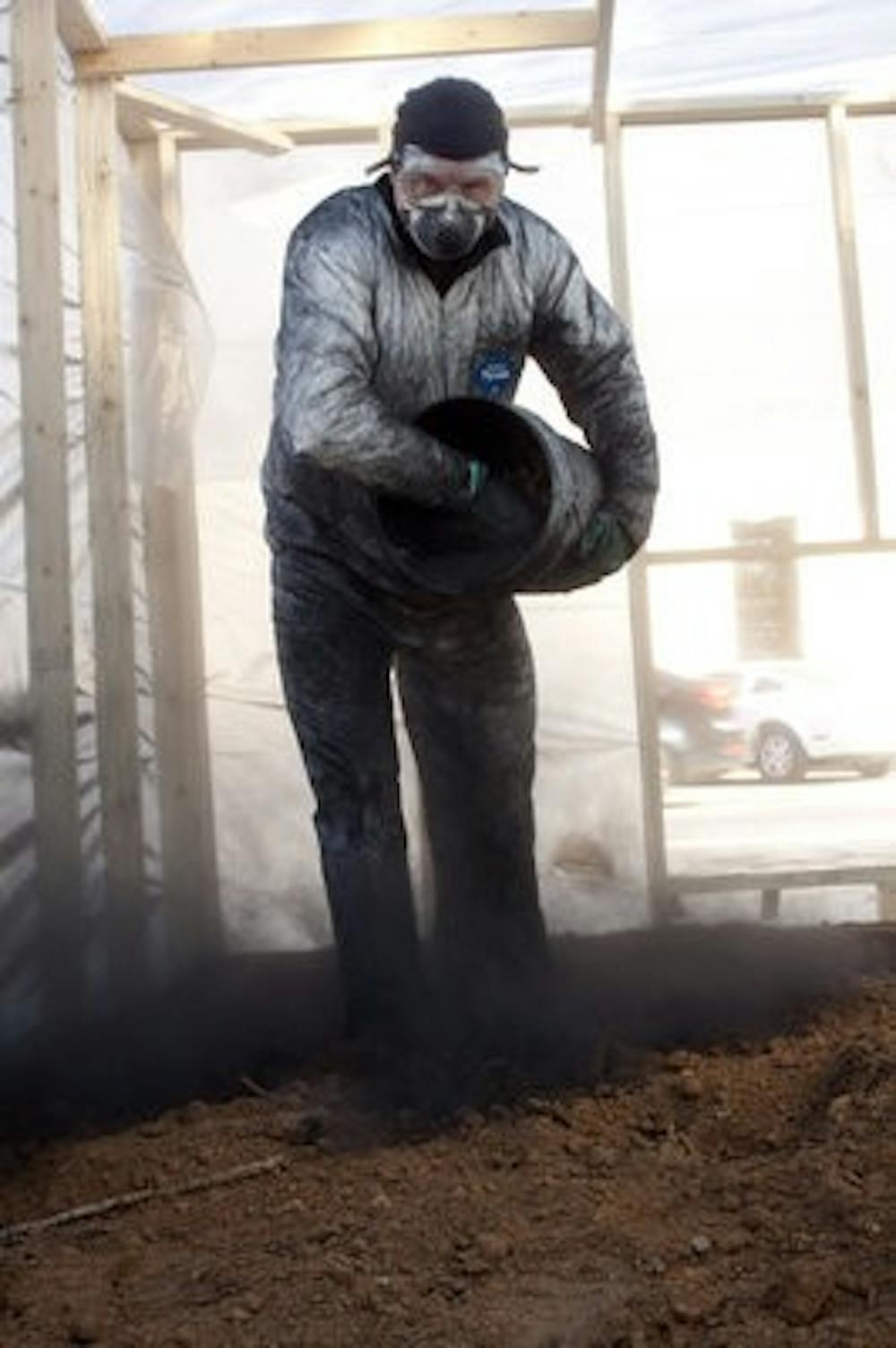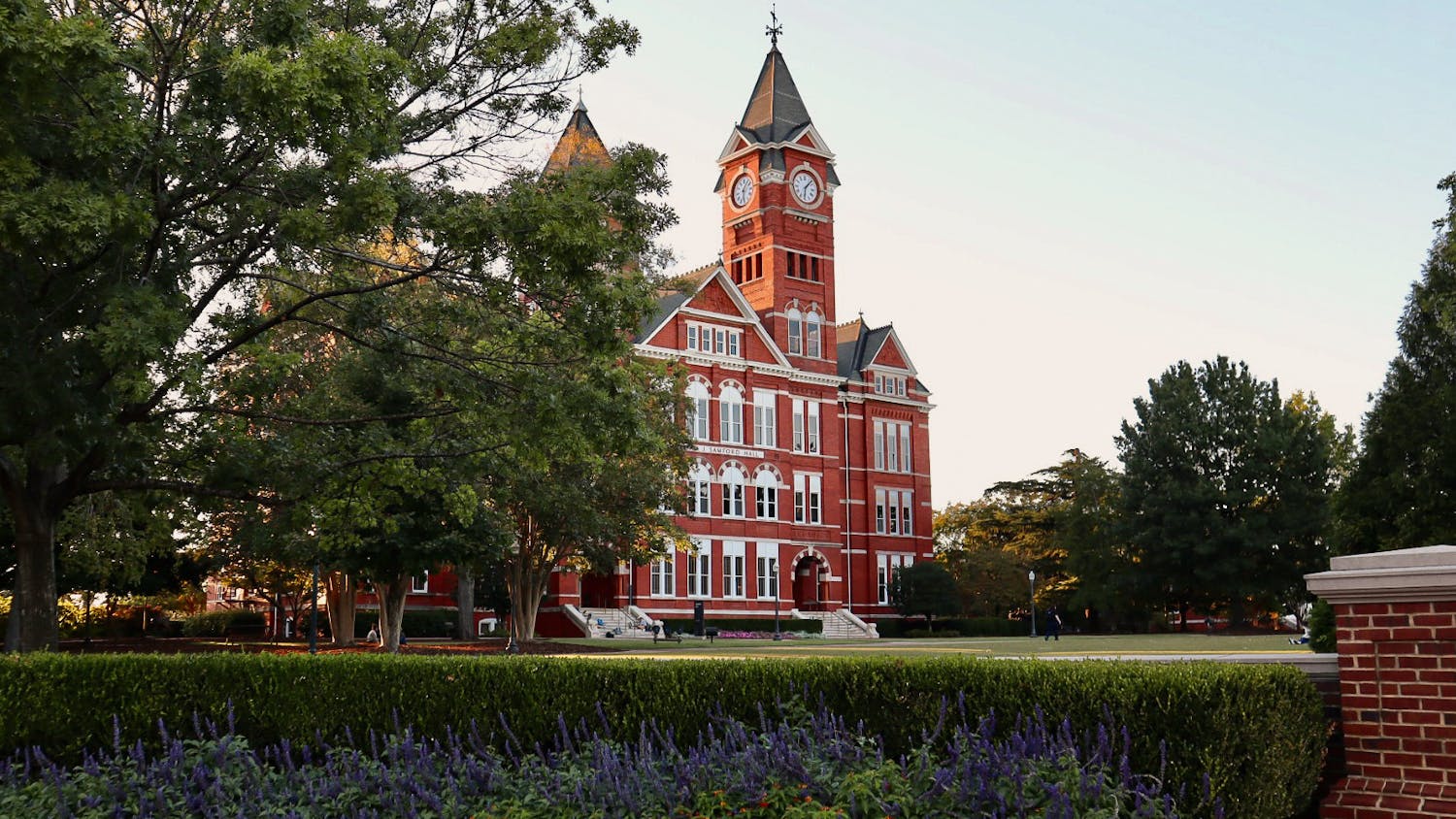One week after word broke that the oaks at Toomer's Corner had been poisoned, a task force has begun its attempt to rescue the oaks and assess the damage to the surrounding soil.
Gary Keever, professor of horticulture and member of the task force, said he was not optimistic about the chances of a recovery for the trees.
"I'd put it between zero and 15 percent," he said.
Even so, workers have removed the topsoil surrounding the roots.
Protective tents were placed over the uncovered roots, and more activated charcoal was applied in an attempt to stop further uptake of the deadly herbicide through the tree's roots.
Keever said the task force was given extra help Sunday from a surprising source when workers from Alabama Plant Services, a Sylacauga-based company, came to Auburn to aid in the project.
"These were Alabama people, and they volunteered their services," Keever said.
Clad in Crimson Tide T-shirts and using an industrial-strength vacuum, the company workers were able to remove the soil from the roots when the vacuum the University was using failed.
"They're part of our community and part of our state, and this was something we felt we could do to give back," said Steve Sherbert, regional manager for the company.
Sherbert said he and his men worked for about 18 hours on the soil.
"These people were truly interested in helping us out," Keever said. "There's so much goodwill coming out of this that just amazes me."
The task force drenched the roots in water to keep them hydrated and new, herbicide-free top soil was packed into the tree beds with more activated carbon early Wednesday morning.
As for the surrounding plant-life, Keever said their initial analysis was showing encouraging signs.
Concentration of the herbicide was not found to be at lethal levels outside of the two large oaks that were poisoned directly.
However, Keever said further testing was needed and some areas did show high levels of the herbicide.
"More than likely this contamination is from people walking in there, and tracking it out," Keever said.
Meanwhile, a joint initiative was announced by Kurt Sasser, SGA president and a senior in human resource management, and James Fowler, SGA president at the University of Alabama.
The two said sister trees would be planted on Auburn and Alabama's campus with a plaque below them as a sign of unity between the two schools in light of the poisoning.
"What we need to do needs to be more than a statement," Sasser said. "It needs to be a public display of mutual respect between the two universities."
No time line was given for when the trees would be planted.
Sasser said the location of the tree on Auburn's campus was not yet known, but he would be in consultation with University planners and wanted to get student feedback before a decision was made.
"Students, fans, faculty and staff all stood disheartened, and the actions of a few certainly do not represent our entire fan base and our Alabama family," Fowler said.
Fowler said he hoped the Toomer's incident would strengthen the rivalry and partnership between the two schools.
"There is a special bond that exists and that everyone knows about between Auburn and Alabama," Fowler said. "When Auburn needs us, we're there and when Alabama needs Auburn, they're there."
Do you like this story? The Plainsman doesn't accept money from tuition or student fees, and we don't charge a subscription fee. But you can donate to support The Plainsman.





